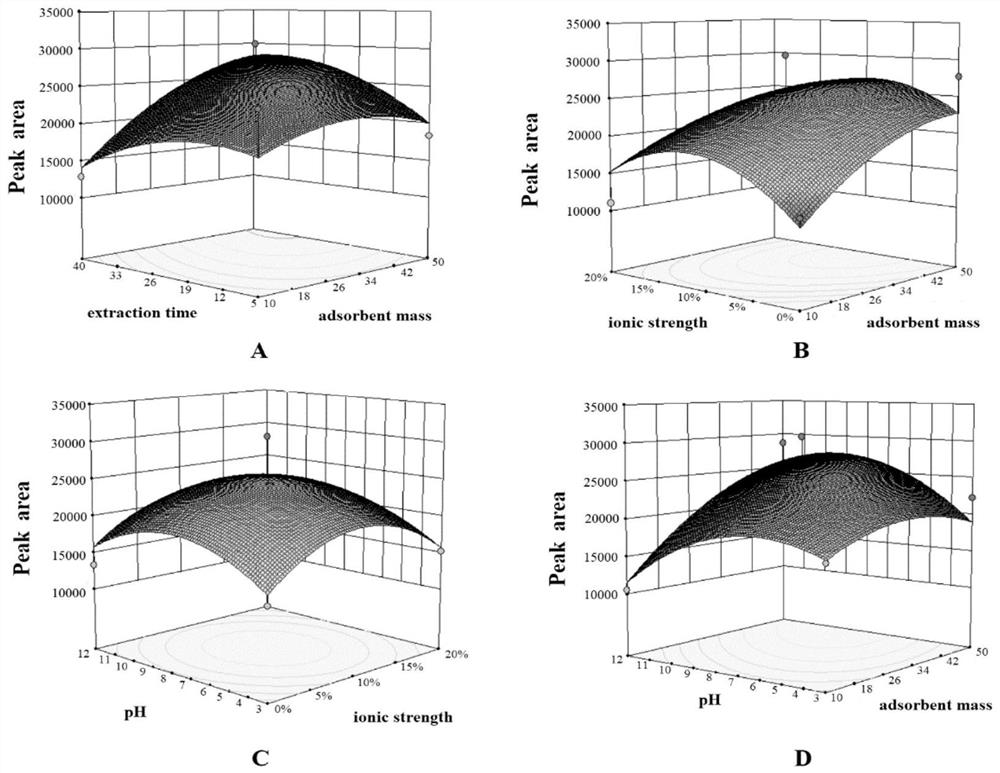Diameter-tunable magnetic-based metal-organic nano-core-shell material and preparation method thereof
A nano-core-shell, organic nanotube technology, applied in the directions of alkali metal compounds, chemical instruments and methods, alkali metal oxides/hydroxides, etc., to achieve the effects of low detection, increased contact area, and improved adsorption effect
- Summary
- Abstract
- Description
- Claims
- Application Information
AI Technical Summary
Problems solved by technology
Method used
Image
Examples
preparation example Construction
[0028] The silanized Fe of the present invention 3 o 4 The preparation can refer to [Magnetic metal-organic nanotubes: An adsorbent for magnetic solid-phase extraction of polychlorinated biphenyls from environmental and biological samples, J.Chromatogr.A 2016,1449,39-47].
[0029] Ag-based metal-organic nanotube material of the present invention ({[Ag 2 (Hbtc)(bpy) 2 ]·(H 2 O) 2} n) can be prepared with reference to the literature Syntheses, structures and properties of two unusual silver–organic coordination networks: 1D→1D tubular intertwinement and existence of an infinite winding water chain, Dalton Transactions 2011, 40, 788].
Embodiment 1
[0030] Embodiment 1: the preparation of the magnetic-based metal-organic nano-core-shell material with adjustable diameter, such as figure 1 Shown:
[0031] 1. Solvothermal Synthesis of Fe-Based Magnetic Nanoions 3 o 4 :
[0032] 2.6gFeCl 3 ·3H 2 O was added to 50mL of ethylene glycol, and stirred for 1h until the mixture was homogeneous. Add 5.75g of sodium acetate, continue to stir for 1h, transfer to 80mL reaction kettle, heat and react at 200°C for 8h, cool to room temperature naturally, wash with ethanol and deionized water alternately, and dry to obtain Fe 3 o 4 Nanoparticles.
[0033] 2. Magnetic nano-ion Fe 3 o 4 Surface hydroxylation modification:
[0034] 0.2gFe 3 o 4 Add it to 45mL sodium dodecylsulfonate solution and stir for 4h, and sonicate for 20min every hour of stirring, so as to disperse evenly. The samples were then washed and dried.
[0035] 3. Magnetic nano-ion Fe 3 o 4 Surface silanization modification:
[0036] 0.3 g of surface hydroxyla...
Embodiment 2
[0042] Embodiment 2: Adsorption experiment of magnetic base metal-organic nano core-shell material:
[0043] The adsorption material prepared in Example 1 carried out magnetic solid-phase extraction:
[0044] Add 10mL of the sample to be tested into a 20mL headspace vial, add the magnetic-based metal-organic nano core-shell material, and sonicate until the adsorption is complete. After the adsorption is completed, the adsorption material is separated from the water sample under the action of an external magnetic field. Add 5 mL of desorption solvent to the adsorbent core-shell material that has adsorbed trihalomethanes for desorption. After the desorption is completed, the desorption solution is concentrated to 50 μL and analyzed by the instrument.
[0045] Use Box-Behnken Design to optimize the important experimental conditions that affect the adsorption effect, such as: adsorption time, adsorbent quality, pH value, ionic strength ( image 3 ). The results showed that the...
PUM
| Property | Measurement | Unit |
|---|---|---|
| diameter | aaaaa | aaaaa |
| diameter | aaaaa | aaaaa |
| correlation coefficient | aaaaa | aaaaa |
Abstract
Description
Claims
Application Information
 Login to View More
Login to View More - R&D
- Intellectual Property
- Life Sciences
- Materials
- Tech Scout
- Unparalleled Data Quality
- Higher Quality Content
- 60% Fewer Hallucinations
Browse by: Latest US Patents, China's latest patents, Technical Efficacy Thesaurus, Application Domain, Technology Topic, Popular Technical Reports.
© 2025 PatSnap. All rights reserved.Legal|Privacy policy|Modern Slavery Act Transparency Statement|Sitemap|About US| Contact US: help@patsnap.com



